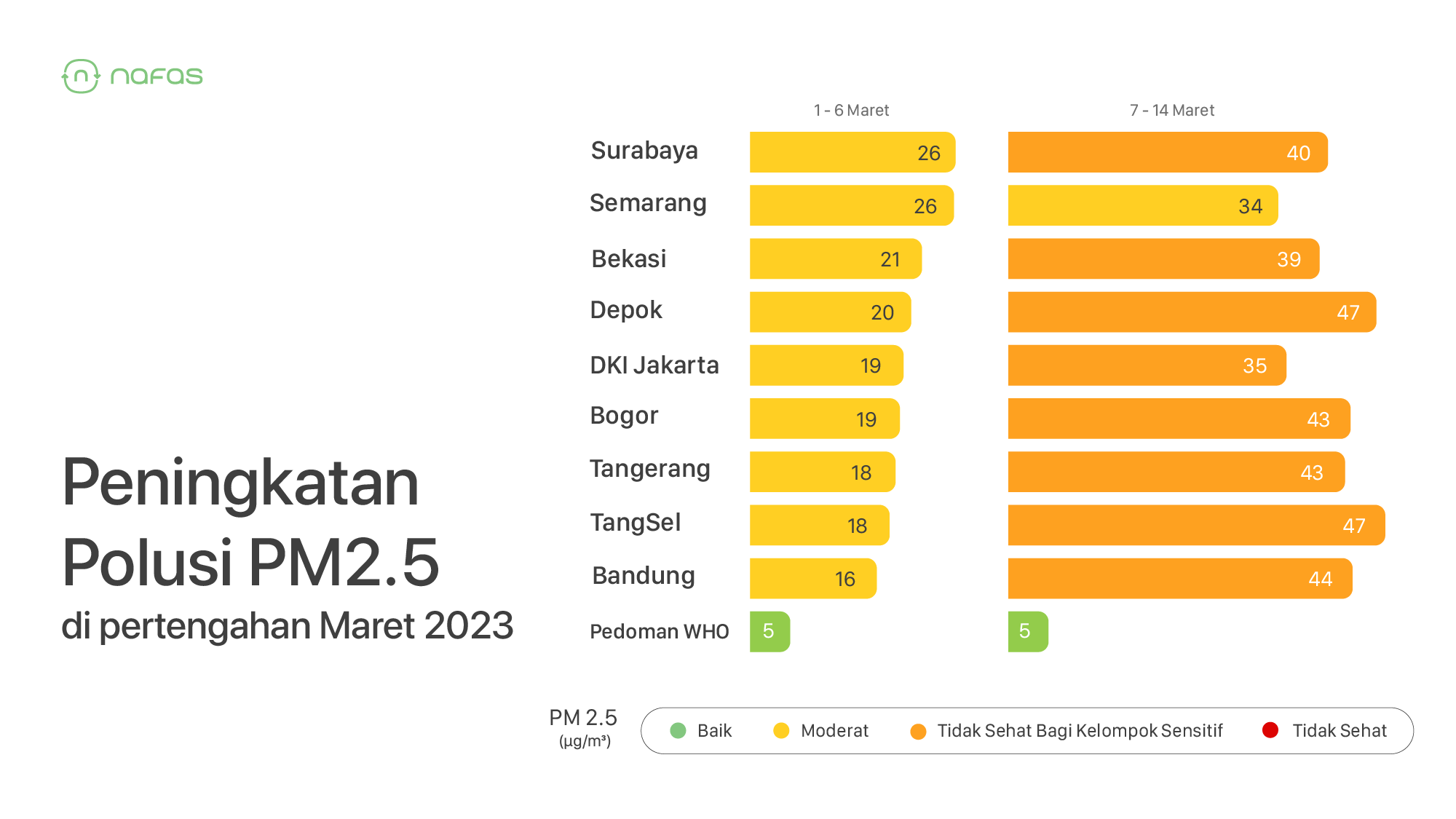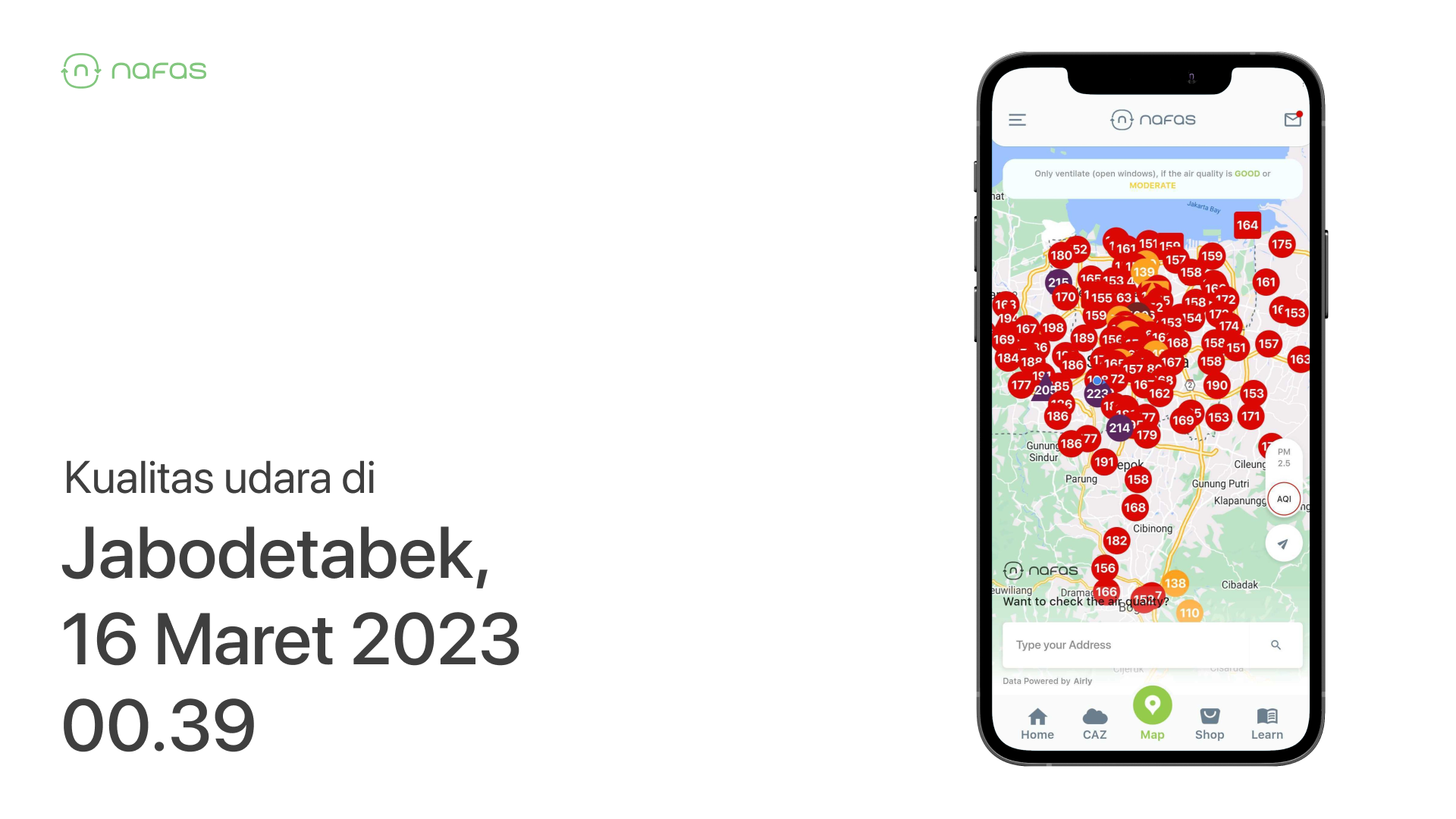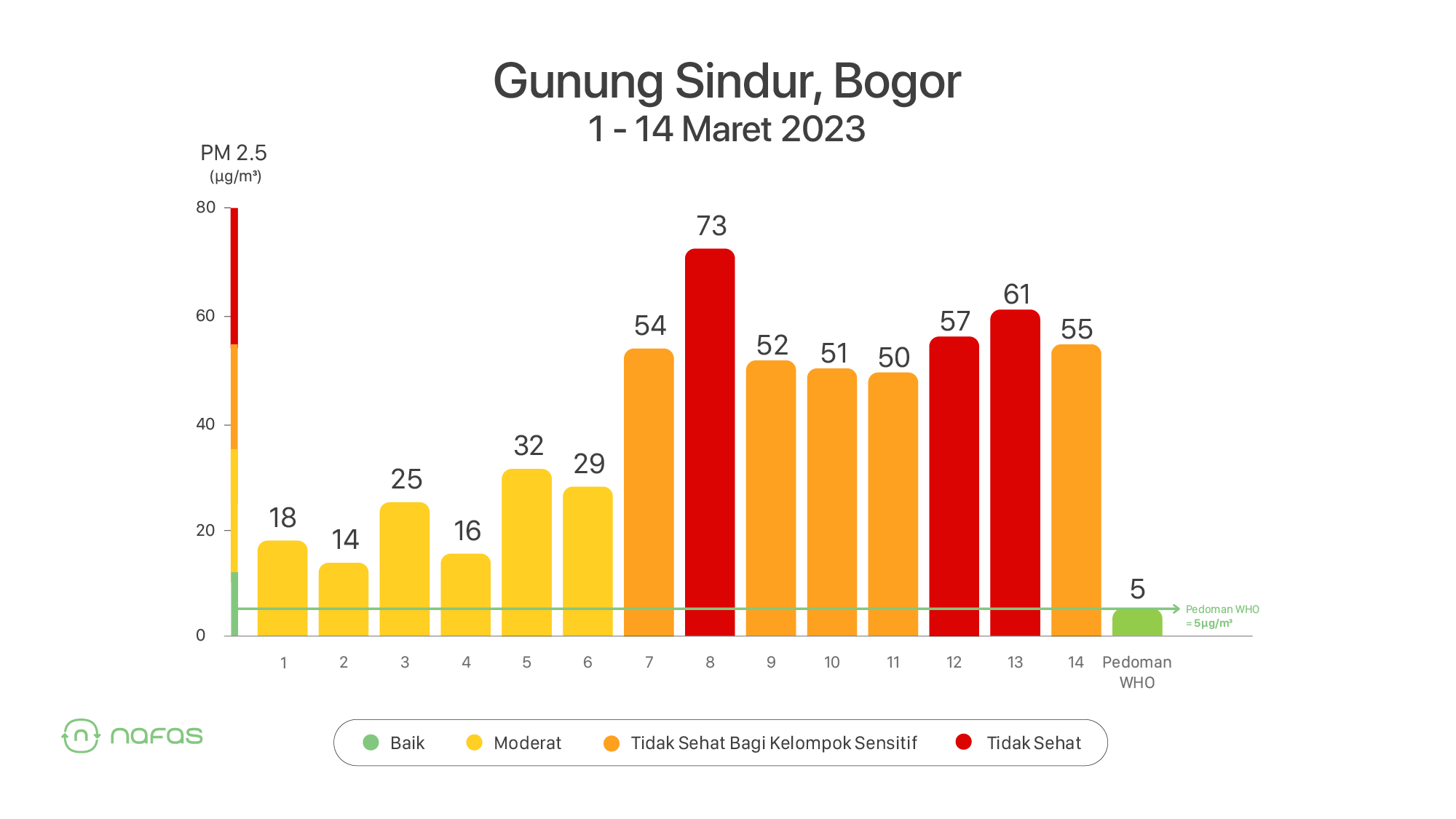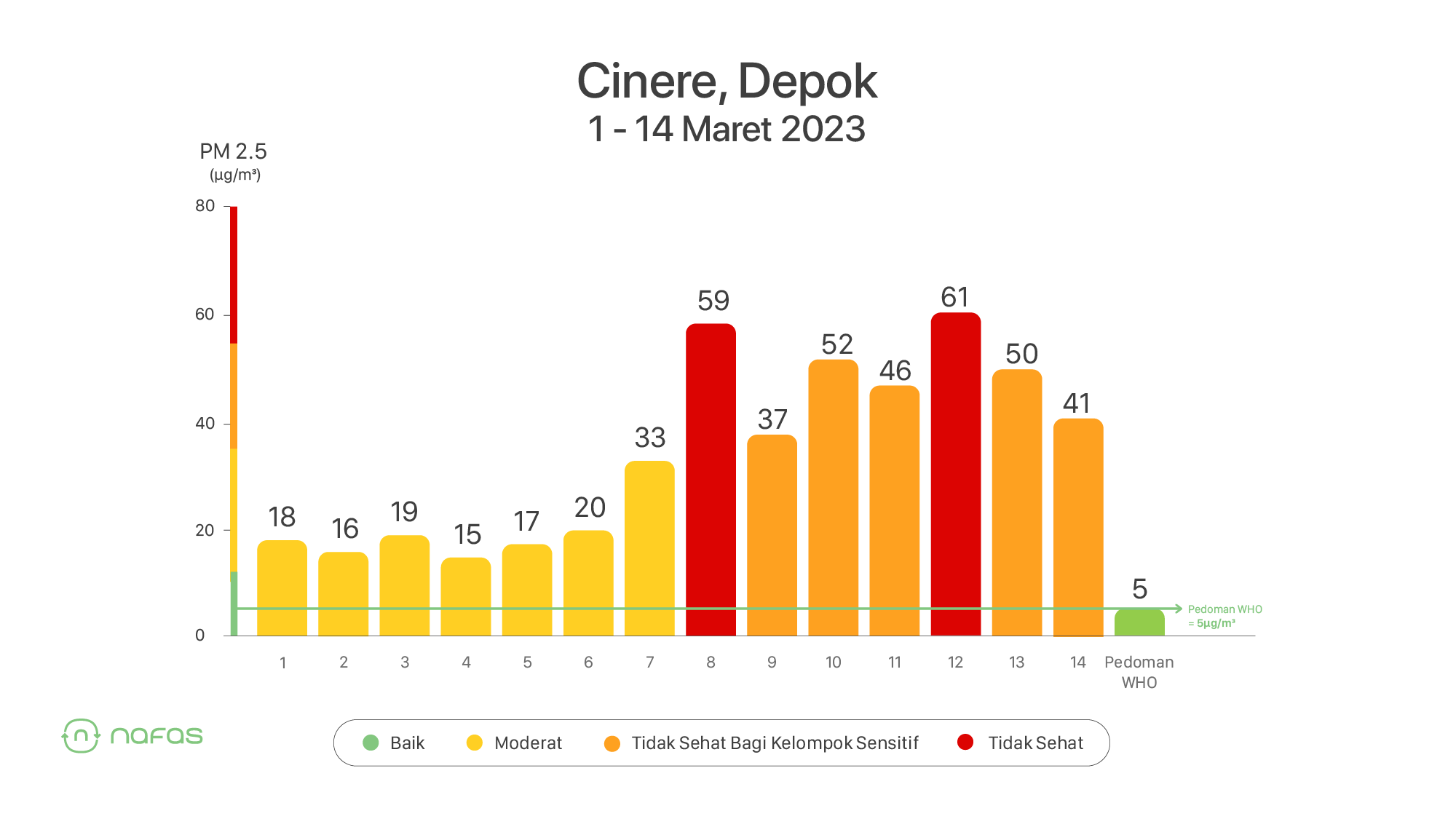Serious health threat: Alarming increase of 200% in air pollution levels during mid-March
💡 Summary:
- The levels of pollution at many locations have risen by up to 200%
- The Jabodetabek region has been hit hardest
- Five locations in Jabodetabek with the highest levels of PM2.5: Gunung Sindur (Bogor), Cinere (Depok), Rempoa Permai (South Jakarta), Serpong (South Tangerang), and Tajur (Tangerang).
According to nafas data, air quality has been decreasing since March 8th, 2023. Among the areas with air sensor devices, Jabodetabek has been the most affected, with the highest increase in PM2.5 pollution levels.
Let's take a closer look at the air sensor data in Jabodetabek to see just how severe the pollution levels were!
PM2.5 pollution has drastically increased in various regions in Java Island
In early March (1-6 March), air pollution in various cities on Java Island was still considered moderate.
However, the situation changed during the second week of March (7-14 March), and air pollution worsened by almost twice the previous amount. The highest increase in air pollution was seen in South Tangerang, where it rose from 18 ug/m3 to 47 ug/m3.
High pollution in Jabodetabek
According to our sensor data, the Jabodetabek area consistently has high levels of pollution. Until early morning on March 16th, the air quality in all areas was considered to be unhealthy to very unhealthy.
Let's take a closer look at which sensor areas in Jabodetabek had the highest impact on the increase in air pollution.
Air pollution in Bogor was 15 times higher than the WHO recommendation

Gunung Sindur was the area in Bogor with the worst air pollution. The highest increase in PM2.5 pollution occurred on March 8th, 2023, with a level of 73 ug/m3.
Residents of Cinere inhale 116 hours (equivalent to 4.8 days) of unhealthy air in one week.

During the second week of March, air pollution in Cinere worsened four times compared to the previous week.
Air pollution in Rempoa Permai increased 2.5 times in the second week of March

The PM2.5 pollution level in Rempoa Permai drastically increased on March 12th, with 68 ug/m3, or almost 14 times above the WHO guideline.
Serpong residents exposed to unhealthy air for 140 hours in second week of March!

During the first week of March, Serpong only had a total of 28 hours of unhealthy air (35.5 ug/m3 - 150 ug/m3). However, PM2.5 pollution significantly increased on March 13th, reaching 79 ug/m3, which is 16 times above the WHO guideline.
The average air quality in Tajur during the second week of March was 0 days with healthy air.

Air pollution in Tajur was quite severe during the second week of March, with no days of healthy air. For two consecutive days (March 12-13), the level of PM2.5 pollution was 15 times above the WHO guideline.
So, what caused the drastic increase in pollution in mid-March?
The accumulation of PM2.5 was supported by atmospheric conditions that began to enter the transition season. With the weakening of winds and the lack of rain clouds in the affected areas, PM2.5 pollution levels increased significantly.
✅ Nafas' 3-Step Recommendations to Minimize PM2.5 Exposure:
Given that air quality is highly variable and can worsen at any time, it's crucial to develop the following habits to minimize exposure to air pollution:
- Download the nafas app
- Regularly check the air quality.
Set your important locations as favorites to make monitoring easier. We recommend making this a habit, not just when pollution levels are high. - Follow the recommendations in the nafas app.
Pay attention to the recommendations we provide based on the level of PM2.5 pollution. From limiting your time outdoors, wearing masks, closing doors and windows, to turning on an air purifier. This way, you can adjust your activity schedule to minimize exposure to air pollution.
🤯 PM2.5 pollution has been proven to be a serious threat to our health and can be one of the triggers for increased risk of respiratory, cardiovascular, and even lung cancer diseases.